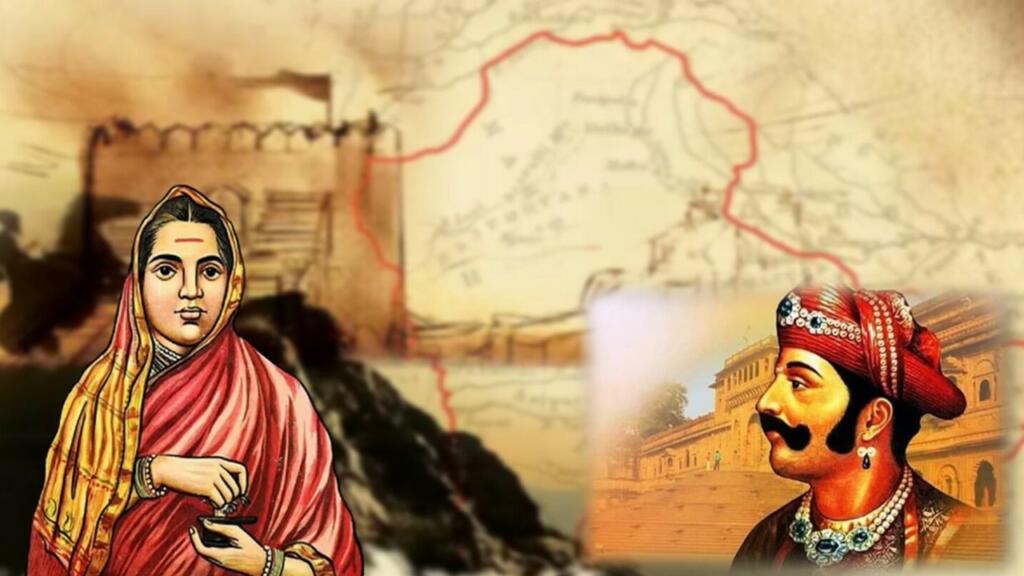There are some individuals who believe that India’s civilization would not have progressed much without the British. However, prior to British rule, India was on its way to becoming a republic. The most dominant empire at that time was divided into various provinces with the support of the people. This was known as the Maratha Confederacy, and one of its founders, the Holkar Dynasty Empire, was regarded as the “Mastakamani” of the Marathas.
This article introduces the Holkar Dynasty Empire, whose accomplishments and contributions are still largely unfamiliar to most Indians.
Beloved of Peshwa Bajirao
In 1720, Peshwa Bajirao was given the responsibility of governing the Maratha Empire, and he implemented several significant changes. He initiated a process of “purification” among the Maratha elite, removing those who obstructed the vision of Chhatrapati Shivaji Maharaj and his dream of “Hindavi Swarajya” through the use of “Sam Daam Dand Bhed” methods.
Bajirao prioritized young advisors and soldiers, including Malharrao Holkar, whom he appointed to command Maratha forces in the Malwa region in 1720. In 1733, the Peshwa granted him nine parganas in the area around Indore, and Malharrao established a camp in 1734 that is now called Malharganj. He began constructing his palace, the Rajwada, in 1749. At the time of his death, Malharrao ruled over most of Malwa and was recognized as one of the five virtually independent rulers of the Maratha confederacy.
However, Malharrao was not only famous for his military and political achievements. Despite prevailing beliefs that Indian society was deeply conservative and hostile to women, he defied these perceptions. Although his son was married as a child according to customs at the time, Malharrao treated his daughter-in-law like his own daughter, initiating her into the intricacies of politics and war strategy. This daughter-in-law was none other than Ahilyabai Holkar, the Subedar of Indore and a source of great pride for the Maratha Empire.
Read more: Yes, Akbar was more Naseeruddin Shah and not even one bit of Hrithik Roshan
Role of Holkar Dynasty in Panipat
Malharrao Holkar has faced a lot of criticism for retreating from the Panipat front, but very few people know the full story of what happened there. Prior to the war, Malharrao was a staunch supporter of expanding the Hindavi Swarajya, and even after his son Khanderao Holkar’s untimely death, he remained committed to this cause.
When Malharrao and other Marathas received news of the Afghan invasion, they immediately prepared for battle. Malharrao, like Raghunath Rao, was in favour of attacking with complete preparation, but Peshwa Balaji Bajirao’s nephew and Peshwa’s Diwan, Sadashiv Rao Bhau, did not heed his advice.
Raghunath Rao was angered by this decision and refused to join the Maratha forces in Panipat. However, Malharrao remained committed to the cause and supported the Maratha army throughout the battle. Although he suffered no significant damage during the battle, he was prepared to fight until his last breath.
When Sadashiv Rao Bhau realized that victory was unlikely, he ordered Malharrao to protect civilians and his family members who were participating in the war. Although Malharrao was not in agreement with this order, he protected many pilgrims and women, including Parvatibai.
However, he was not entirely successful in this campaign, and this failure haunted him until his death in 1766. Therefore, it is important to understand the full story before making judgements about Malharrao’s actions at the battle of Panipat.
Read More: A Narrow Miss: When Jodhpur Nearly Became Part of Pakistan
How Ahilyabai Holkar kept the Maratha Empire and India’s pride intact
However, the Holkar Dynasty Empire’s legacy did not end there. After Malharrao’s death, his daughter-in-law, Ahilyabai, took over the administration of the Indore Diocese. She played a crucial role in supporting the revival of the Maratha Empire by backing leaders like Mahadji Shinde, Nana Fadnavis, and Peshwa Madhavrao.
Furthermore, Ahilyabai undertook several welfare initiatives, including constructing temples, ghats, wells, and stepwells. She also improved road infrastructure, established Annasatra (food distribution centers) for the needy, and appointed scholars in temples for meditation and religious discourse. She was known for her impartiality and commitment to justice, disregarding her own ego. The Kashi Vishwanath Temple in its present form was constructed under her guidance, as its original structure was demolished years ago by Aurangzeb.
Read more: Raghunath Rao vs Peshwa Madhavrao: The Mahabharata that could’ve been avoided
Ahilyabai was a trailblazer, following in the footsteps of her contemporary Ramshastri, the judge of Poona, and paving the way for future leaders like Rani Lakshmibai of Jhansi. During her lifetime, Ahilyabai was revered by the public, who saw her as a goddess. This was because she was a beacon of hope in a time of chaos and turmoil.
The people, from ordinary householders to peasant laborers, were suffering and struggling under a system that was rife with atrocity and superstition. Religion, their only support, was being used to oppress them, and justice seemed out of reach. However, in these difficult circumstances, Ahilyabai stood tall and accomplished a great deal. Her legacy is truly remarkable.
Support TFI:
Support us to strengthen the ‘Right’ ideology of cultural nationalism by purchasing the best quality garments from TFI-STORE.COM
